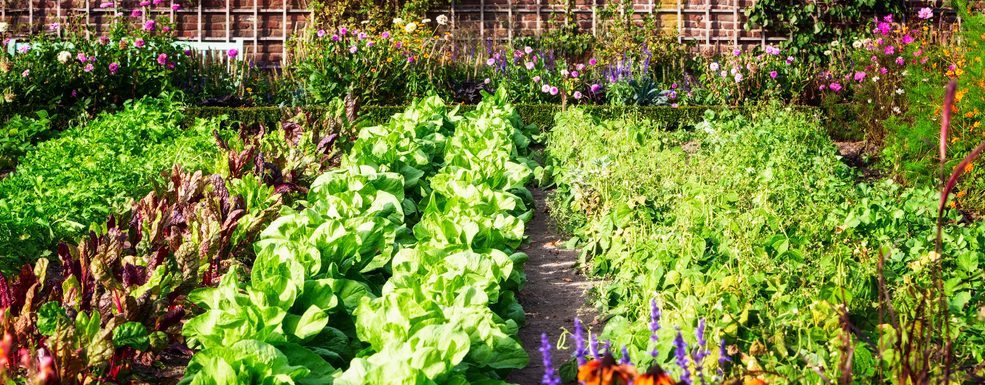Lawn & Garden

There are many questions people have about growing methods. One particular topic that gardeners often ask about is foliar feeding. There are a lot of products on the market, enticing growers to spray them on their plants with promises of bigger and tastier vegetables.
Most of basic growing methods rely on applying fertilizers to the soil in order to provide plants with the nutrients that they need for healthy development. At one time or another applying nutrients to the plant’s shoots and leaves to correct deficiencies or to accelerate growth (sometimes referred to as “greening up” plants), ends with mixed results.
These mixed results may result from applying the materials at the wrong time or from using a material that was not designed for foliar application. In order to successfully use foliar feeding and apply nutrients effectively, we have to understand how it works. If we simply spray these materials on hoping for the best, chances are that we are just throwing our money and effort away. Here are some of the facts and basic information on foliar feeding.
Macronutrients
Macronutrients (N, P, K, calcium, magnesium, and sulfur) should be applied to the soil, as the plant requirements are higher than what could be supplied through the foliage. Plants have a difficult time absorbing these nutrients through their leaf tissues. In some cases, such as blossom-end rot in tomatoes or watermelons, foliar calcium sprays are used to slow the progress of this condition. This is more of a stop-gap measure and should never be thought of as a curative measure. It is always best to lime properly or apply calcium containing fertilizers such as calcium nitrate.
In the case of magnesium, many of the Cole crops (cabbage, broccoli, collards, greens, etc.), magnesium deficiencies can occur due to improper pH or failure to lime with a magnesium containing material (dolomitic lime). Epsom salts (magnesium sulfate) is commonly applied to the foliage or to the soil to alleviate this condition. Again, the best bet in any case is to soil test to determine what your soil needs before you plant and apply it as directed. Trying to play catch up while the plants are in the ground is never a good idea.
Micronutrients
On the other hand, micronutrients (including zinc, boron, copper, iron, manganese, molybdenum, etc) are usually required in small amounts and can be applied through the foliage. You can normally provide what the plant needs with two or three annual applications. However, for the leaves to absorb these micronutrients, the proper formulation for foliar application must be used – formations such as iron or zinc chelate.
Micronutrients often become “unavailable” as soil pH gets high (above 7.5). This is not a problem on most soils in Alabama with the exception of the prairie or black belt soils or on soils that have been over limed. Some plant species have more of a demand for micronutrients such as iron. Sometimes these are referred to as iron or acid-loving plants. Many people have likely noticed dogwoods, hollies, and azaleas with new leaves that displayed an iron deficiency. The veins on the young, developing leaves appear yellow instead of green. This is a classic symptom of iron deficiency. Two to three application of iron chelate can alleviate the deficiency.
Foliar Application
When applying any foliar nutrient, always follow the label directions and never exceed the recommended rate, otherwise you will likely cause a “burning” (called a phytotoxic reaction) of leaf tissue. It is also best to apply foliar nutrients early in the morning before the sun heats the air temperature. As the ambient air temperature increases, the likelihood of a phytotoxic reaction increases. On summer days with high air temperatures (above 85 F), the likelihood of burning plant tissue is greatest and it would be best to avoid applying any foliar nutrients.
Leaf Uptake
Remember, leaves are not designed for liquid nutrient solution uptake. In general, only about 15 to 20 percent of the materials that you spray onto the leaf are actually taken in. The stomates, through which absorption takes place, are found mainly on the undersides of the leaves. The upper surfaces of the leaves are usually coated with waxy substances, which protect that stoma from the elements.
As the leaf ages, this cuticle becomes thicker. Also, the hotter the climate, the heavier the cuticle. However, do not confuse the hot climate with the ideal times for absorption, which are usually in mid morning when the cuticles are still soft from the overnight humidity and the leaf metabolism is active because of the warm temperature. Leaf absorption (uptake) is critical for foliar feeding to work properly.
Before applying any foliar nutrients, be sure that what you are intending to apply will address your current problem. Taking the shotgun approach can be costly. Using proper diagnostic tools such as a soil test and foliar tissue analysis will help pinpoint any nutritional problems. For information on these tests or for recommendations on foliar application of micronutrients, check with your county Extension agent.

